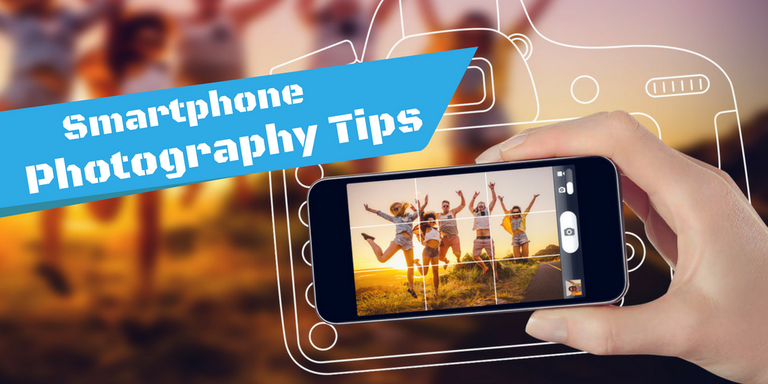
Smartphones are by far the most common form of camera used today, and it’s easy to see why: they’re compact, most people have one with them at all times, and many can take photos that rival standalone point and shoot cameras.
To help you take the best photos with your phone, we’ve laid out ten handy tips we find ourselves using every day. With this knowledge in hand, you’ll be able to produce some awesome shots from a fairly limited though continually improving camera platform.
1 Know Your Auto Mode
Knowing that automatic shooting mode for your smartphone camera work can help you take good pictures. Take the time to learn when it uses high ISO when it uses long shutter speed and adjusts how you take photos accordingly. It specifically helps to know when auto mode conflicts happen because you can then decide to override the appropriate settings.
smartphone photography tips
smartphone photography tips
2 Override the Defaults
When it comes to choosing settings automatically, smartphones are better, but they do not always believe it to be correct. In difficult situations, in the metering, especially indoors and overcast days, with the best cameras in the market can leave a lot to be desired.
If you think white balance or exposure is off, many smartphone cameras allow you to adjust these parameters as you like. In almost all phones, automatic mode includes a slider that can adjust the exposure on the fly, so there is no reason to capture such photos that are too bright or too dark. White balance adjustments are often required to switch from auto to manual mode (where supported), but many cameras now support fine adjustment at color temperature.
The best manual mode allows you to change the ISO and shutter speed so that you can choose how much speed mist will be present in your images, and how much grain will be visible. Longer shutter speed, usually less than 1/30 of a second, will need steady hands. Over 800 ISOs offer noticeable cereals on a smartphone but receive much more light compared to less ISO. To find the best combination for those shots is worth playing with these settings, the ones you want to achieve, and the great news is the more comprehensive end phones, these are included in the larger manual modes.
If centrally-weighted metering is not providing the correct result, then you may also consider switching to spot-metering, which allows some cameras to allow you to. With preference at the center of the frame, the image looks completely centered on the meter according to what appears. When shooting subjects off-center, switching to spot metering can be a good idea to fully expose the area around the ‘spot’ you have selected. Not every camera allows you to change this setting, but with a handful in which there are extended manual modes, a metering mode comes with the switch.
HDR greatly improves visible detail in shadows.
Photos taken with the now dated Samsung Galaxy S5.
smartphone photography tips
smartphone photography tips
In the original version of this article, we also talked about using HDR mode to improve the dynamic range – a series of light shots intensity can capture a camera in a photo while details of your shots – these days, almost Every phone will automatically activate its HDR mode, so you do not have to worry about manually turning it on. But there are some examples where HDR should be used and not so, so it may be appropriate to force HDR mode.
3 Use Good Posture
An important way to reduce the haze is to know how to hold a smartphone camera in a steady way. Holding your hands outside or away from your body can do more during photography. Carrying your elbows on the edges of your body where there may be necessary stability, where essentially the smartphone can relax on the stationary object.
If you want the right stability, it is possible to get a tripod attachment so that you can slot your smartphone. You will probably see some tripods about using a tripod with your phone and with your phone, but we have seen and achieved some fantastic shots with a tripod in hand. Tripods are especially useful if your smartphone does not include blur-reducing optical image stabilization (OIS) in the camera, or if there is a manual mode that supports exposure photography for long periods of time.
4 Never Digitally Zoom
In the original version of this article, we did not advise users to zoom with a smartphone camera, but these days it is advised that they are not always right. Many phones, including iPhone X and Samsung Galaxy Note 8, include secondary cameras that provide 2x optical zoom. There is no reason why you should not use those cameras because they provide an optical zoom without loss of image quality.
Instead, we recommend against digital zooming. This happens when you pinch or swipe to zoom on most phone cameras: Before the phone is captured, it increases the output from the sensor and crashes.
What is seen on the left is the product of a digital zoom.
Notice the massive loss in quality. Shot on the Huawei Mate 9.
smartphone photography tips
Prior to capturing, digitally zooming does not allow you to reprise the image after this fact: You are essentially losing data and not reducing quality. Yes, the image will appear to show an image in the distance than otherwise, but you can easily take photos without zooming, and then you can harvest it later. Taking photos without zooming provides the flexibility and ability to change your mind later on. This is the best in both worlds.
If you have a phone that includes 2x optical zoom, then it’s best to paste the photo into 1x or 2x zoom, because this will give you full quality of wide angle and zoom camera respectively.
click on the link to read full post
https://technewspaper.in/10-tips-for-smartphone-photography/